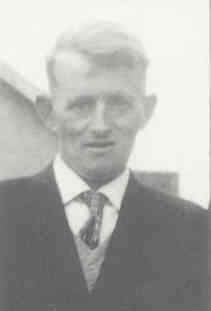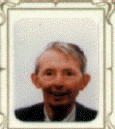The Barron Inquiry - Draft Terms of Reference for Inquiry - A Fresh Inquest - 2005 Inquest Account - BIRW Report - Witness Account - Ludlow Family Account - Sunday World report May 1976 - Meeting the Police Ombudsman - Ed Moloney Radio Interview - 25th Anniversary - Profile - Questions - Photographs - Press Release - Letter to RUC - Magill article 1999 - Press Coverage - Barron Report Published - Ludlow Family Response to Barron Report - Download the Barron Report from the Oireachtas website (pdf file) - Statement from Justice for the Forgotten - Joint Oireachtas Committee Request for Submissions - Joint statement from Justice for the Forgotten, Relatives for Justice and the Pat Finucane Centre - Download Transcript of Ludlow family meeting with Oireachtas Sub-Committee (Word file) - Publication of the Oireachtas Report - Download the Final Oireachtas Sub-Committee Report on the murder of Seamus Ludlow from the Oireachtas website (pdf file) - Ludlow family press release in response to the Oireachtas Report
Original Ludlow Family website - Second Ludlow Family website - The Dundalk Bombing
The Argus (Dundalk), 5 April 2006:
Final report of the Independent Commission of Inquiry into the murder of Seamus Ludlow
The sub-committee had the gravest of concerns about thre role collusion played
 The
question of collusion between the Irish and Northern Irish authorities
was one of the core issues raised at the Joint Committee hearings.
The
question of collusion between the Irish and Northern Irish authorities
was one of the core issues raised at the Joint Committee hearings.
The committee's final report states that "it has the gravest of concerns about the role collusion played in the murder of Seamus Ludlow."
It notes that "there are disturbing parallels between the role collusion played in the murder of Seamus Ludlow and the role collusion played in the Dublin and Monaghan bombings, as discussed in the previous two reports of this Joint Committee."
In its written submission to the Sub-Committee, British Irish Rights Watch stated that it "... has always been puzzled as to why the Irish authorities seem so untroubled by the fact that the murder of Seamus Ludlow involved a serious cross-border incursion by two serving members of the British army."
Mr Michael
Donegan repeated the utterly extraordinary story of how his father,
Kevin Donegan (now deceased), was kidnapped by the British Army a day
after the funeral of Seamus.
He told how the day after his uncle's funeral a party of British soldiers called to their house at Dromintee. His father opened the door to them and they told him they had been sent by the RUC to question his mother.
"It was very strange, when I think about it, that they knew my mother was Seamus Ludlow's sister. Some of our neighbours did not know that: the British Army did," said Michael.
When his mother came out, they asked her why should the IRA kill her brother, that he must have been involved in something and deserved it. After the soldiers had left, his father cycled to Forkhill to make a complaint to the RUC. There was no one available to see him.
Mr Donegan says that his father was "then abducted, put aboard a British military helicopter and flown to Bessbrook where he was interrogated for over an hour by a military inteligence officer. He did not speak about it much, but he always said the one thing they wanted to know was what the Garda knew and was thinking, and what was its line of inquiry."
The report states that "the Sub-Committee is of the view that this event, taking place as it did the day after the funeral of Seamus Ludlow, gives rise to the most serious of concerns about the precise knowledge of the British Army at the time of the murder of Seamus Ludlow and its aftermath."
The likelihood of collusion was also dealt with by Ms Jane Winter of the British Irish Rights Watch who stated "... there seems to have been a toleration of members of the regular army also being members of paramilitary groups. They obviously had access to weaponry, know-how and explosives. Many were part-time soldiers and were obviously spending part of their time in the Army and part in paramilitary groups. However, there seems to have been very little true concern about this or attempt to eradicate it. Attitudes today are perhaps very different but at the time there seems to have been a great deal of tolerance for that sort of thing.
"I believe there was also a degree of direction going on. I certainly think, in the case of the dublin and Monaghan bombings, that the bombs in Dublin were very sophisticated for their day and that outside help must have been given to the people who planted those bombs in their manufacture."
Journalist Ed Moloney, who first informed the family of the identity of those suspected of murdering Seamus Ludlow, also raised the possibility of collusion.
"There is an elephant in the room and everyone is pretending it is not there. No mater how awkward, embarrassing, inconvenient or even irrelevant in some eyes, the question must be asked and answered because, if we are honest, we all know it has lurked, sometimes unspoken, sometimes not, in the minds of every person who has had anything to do with the attempt to establish the truth behind the events of 2 May 1976. The elephant is the possibility that Seamus Ludlow was killed by a loyalist paramilitant who was working as an agent for British intelligence and whose role was covered up by them, with the assistance of elements in the Garda Siochana. It derives both from the realities and history of the dirty little intelligence war that was fought in the North and from many of the circumstances of the Ludlow killing and especially its aftermath."
 The
Sub-Committee stated it has the gravest of concerns about the role
collusion played in the murder of Seamus Ludlow. It is undisputed that
two of the suspects identified by the RUC were serving members of the
UDR at the time. The suspicion of collusion arises so strongly because
of the following:
The
Sub-Committee stated it has the gravest of concerns about the role
collusion played in the murder of Seamus Ludlow. It is undisputed that
two of the suspects identified by the RUC were serving members of the
UDR at the time. The suspicion of collusion arises so strongly because
of the following:
(1) Two of the suspects were serving members of the UDR.
(2) The fact that the brother-in-law of Seamus Ludlow, Mr Kevin Donegan, was kidnapped the day after the funeral by the British Army, who wanted to know what the Garda knew about the case.
(3) No notes of the interrogation of Mr Kevin Donegan by the British Army have ever been made available by the British authorities.
Top I
Download the Barron Report on the murder of Seamus Ludlow from the Oireachtas website (pdf file)
SUPPORT THE SEAMUS LUDLOW APPEAL FUND
Bank of Ireland 78 Clanbrassil Street Dundalk County Louth IrelandAccount No. 70037984
Thank You.
Copyright © 2006 the Ludlow family. All rights reserved.
Revised: April 21, 2006